| To my home page |
|
|
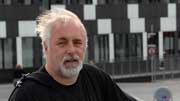 Vilnius 2018 Iceland 2015 Naxos, Greece 2013 2014 2015 2017 2018 2019 London, England 2012 Amsterdam 2012 Mandø, Denmark 2010 North-west Norway 2010 Costa Blanca, Spain 2009 Provence, France 2008 Cote d'Azur, France 2007 Berlin, Germany 2006 Lisboa, Portugal 2004 Portugal 2002 |
Across Denmark in 2010From west to easy in Denmark it is approximately 300 km by road. The sun goes down in the sea at Mandø, just south of Esbjerg. |
E-mail me |
|
|
||
Mandø is a tidal island in the Wadden Sea
in western Jutland (Jylland). About 60 inhabitants live permanently on the
island which has got a land connection to the mainland only at low tide. 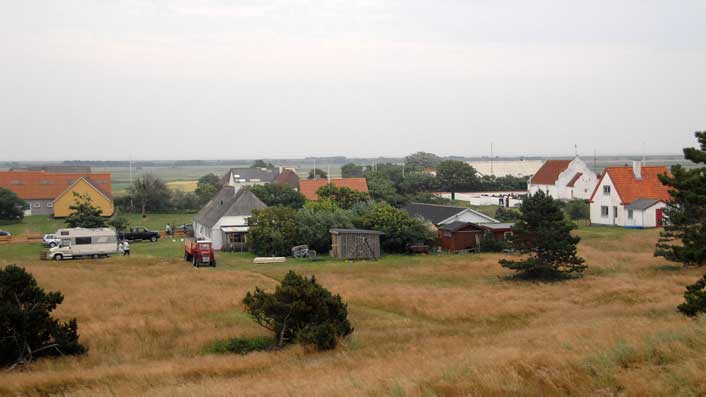 Some friends of ours had a house on Mandø and they drove us around, with a tractor. A strange sightseeing.  The nearest city is Ribe,  with it's Cathedral, that is a Romanesque church from the 12th century.  Ribe is the oldest city in Denmark and the Nordic countries. Archaeological excavations have confirmed that it was a trading town as early as around the year 700, and it is mentioned as the episcopal see in 948. 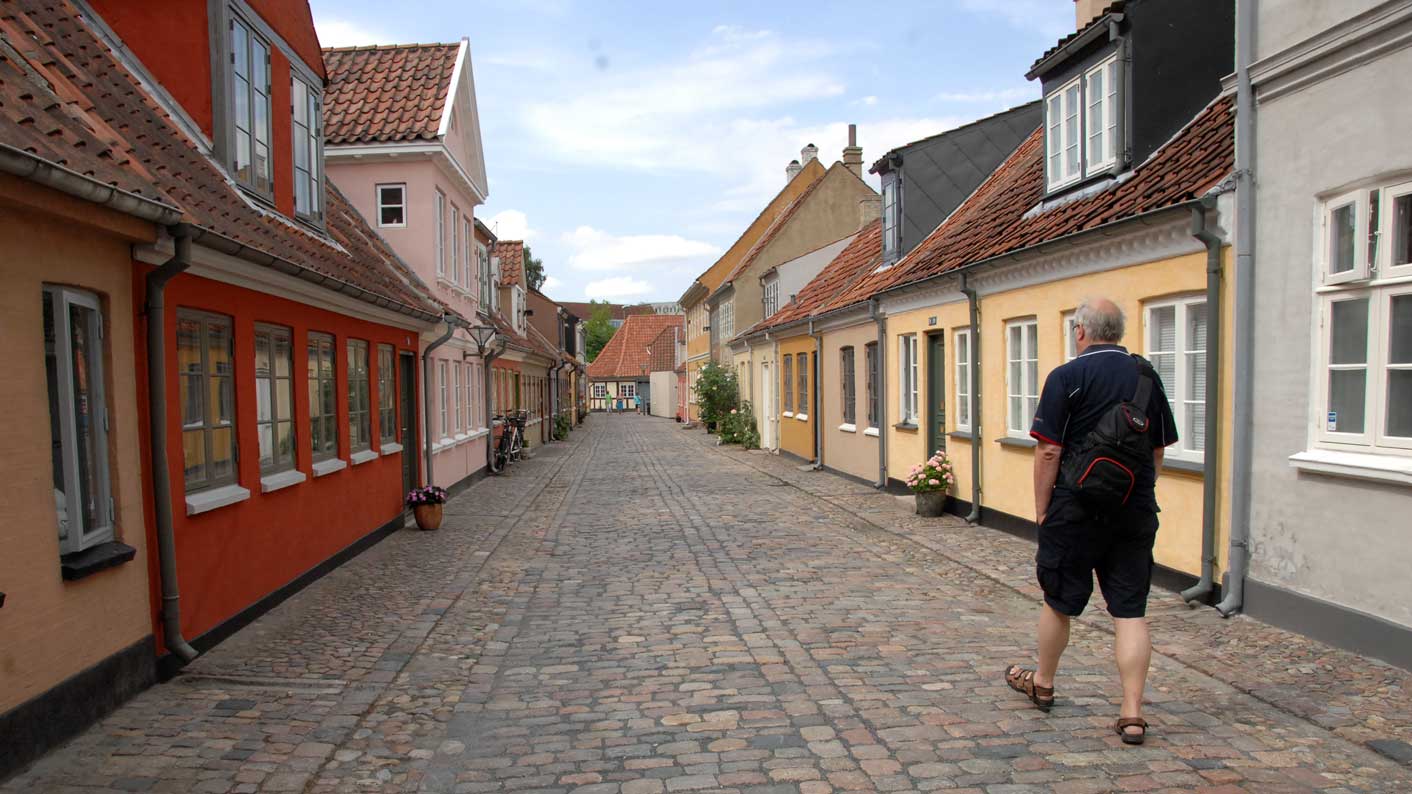 Further east: Odense is Denmark's third largest and is located on the island of Funen (Fyn) In Odense you see me walking around looking for the home of H.C. Andersen, the the well-known poet and writer of fairy tales. Denmark consists of the peninsula Jutland (Jylland) and 443 named islands, the largest being Zealand (Sjælland). Many of the larger islands are connected by bridges. The Øresund Bridge connects Sjælland to Sweden, 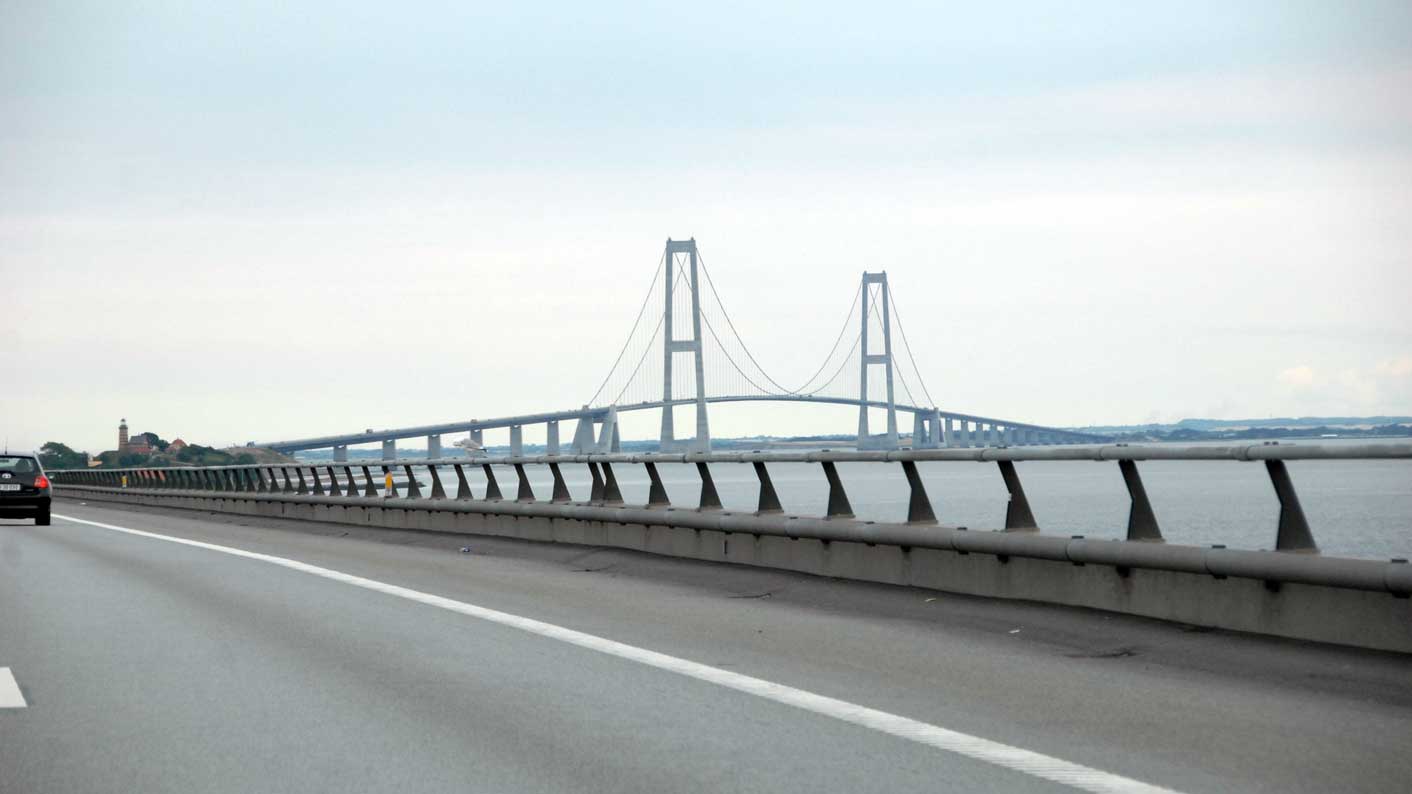 Storebæltforbindelsen (Great Belt connection) connects Fyn to Sjælland. The 6.8 km long Østbroen is part of the Great Belt connection. It runs between Sprogø and Sjælland. The breakwaters are 254 meters high, and among Denmark's highest man-made points. The bridge is the world's fifth longest suspension bridge. On the island Sjælland we find the capital of Denmark, Copenhagen. Copenhagen was granted city rights in 1254. In 1416 the king, Erik of Pomerania, made the city the capital and military center of Denmark. 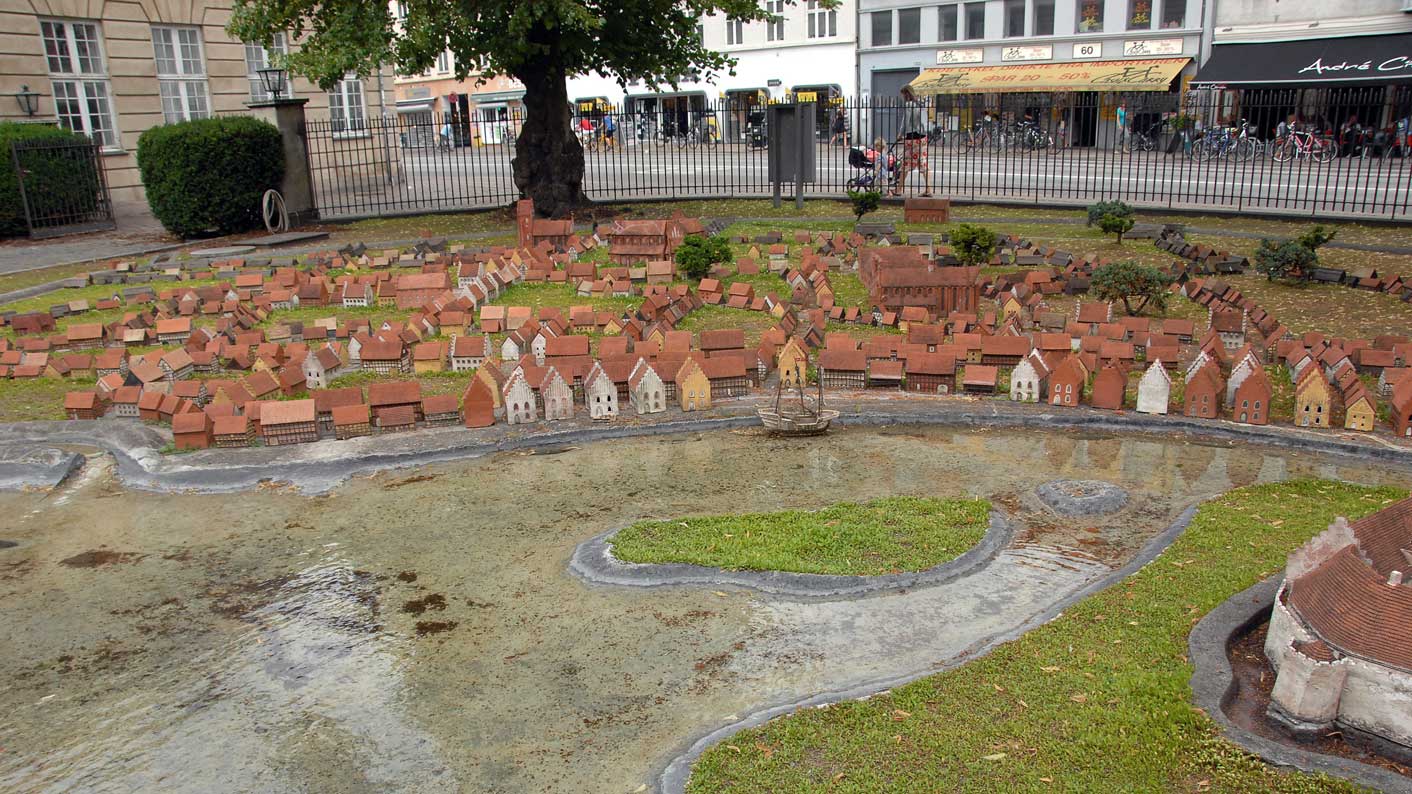 Here is an early settlement shown as miniature houses in the district Vesterbro in Copenhagen.  Christiansborg. As they write themselves: "Christiansborg Palace is located on Slotsholmen in Copenhagen, which has an 800 year-long history as Denmark’s centre of power. The present palace was completed in 1928, but from this place kings and queens have ruled for centuries. Today, the palace is used by HM The Queen for official events such as gala banquets and public audiences." Christiansborg is also home to the Danish Parliament (Folketinget), the Supreme Court and the Prime Minister's Office. Copenhagen has got canals, here Sjælland to the left and Amager to the right. 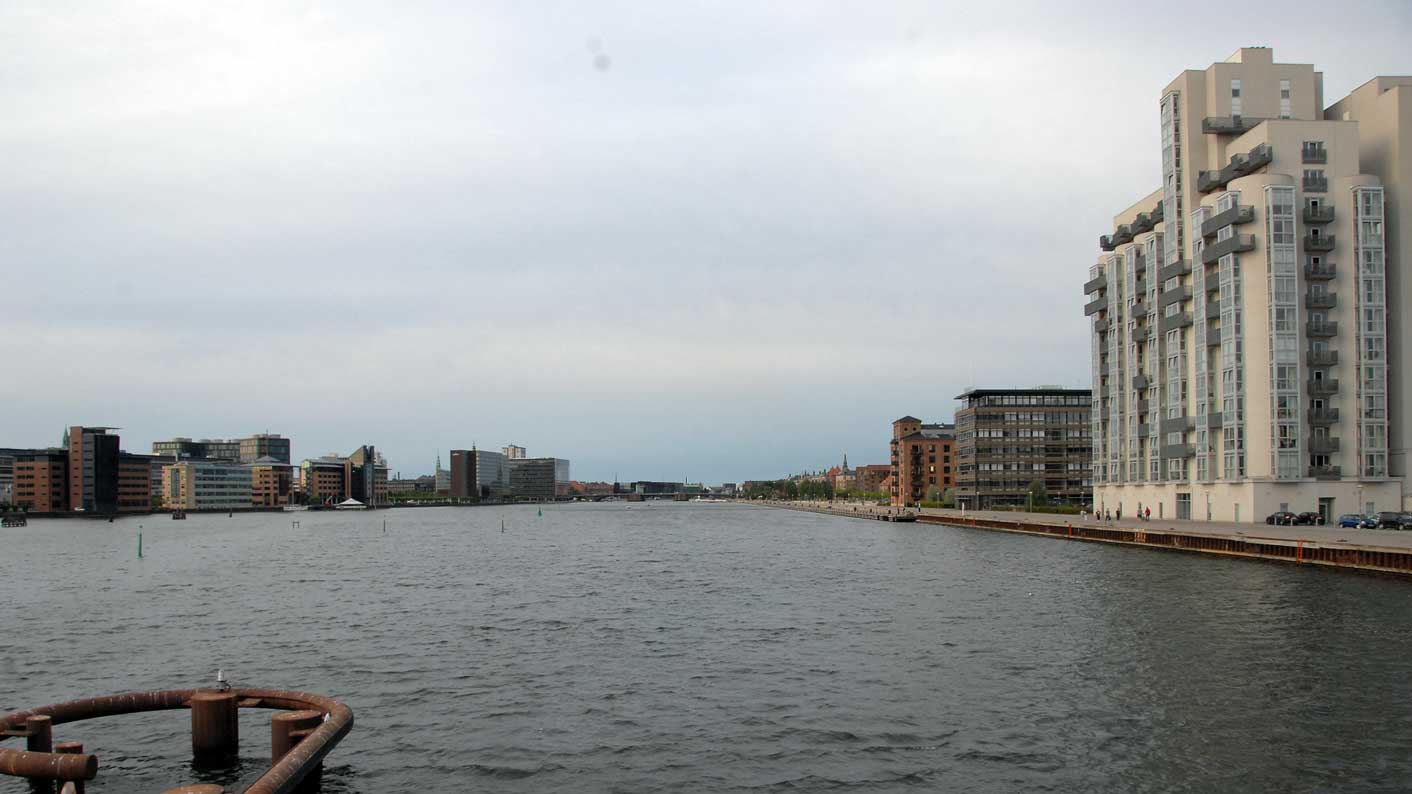 And with canals comes canalboats for tourists. 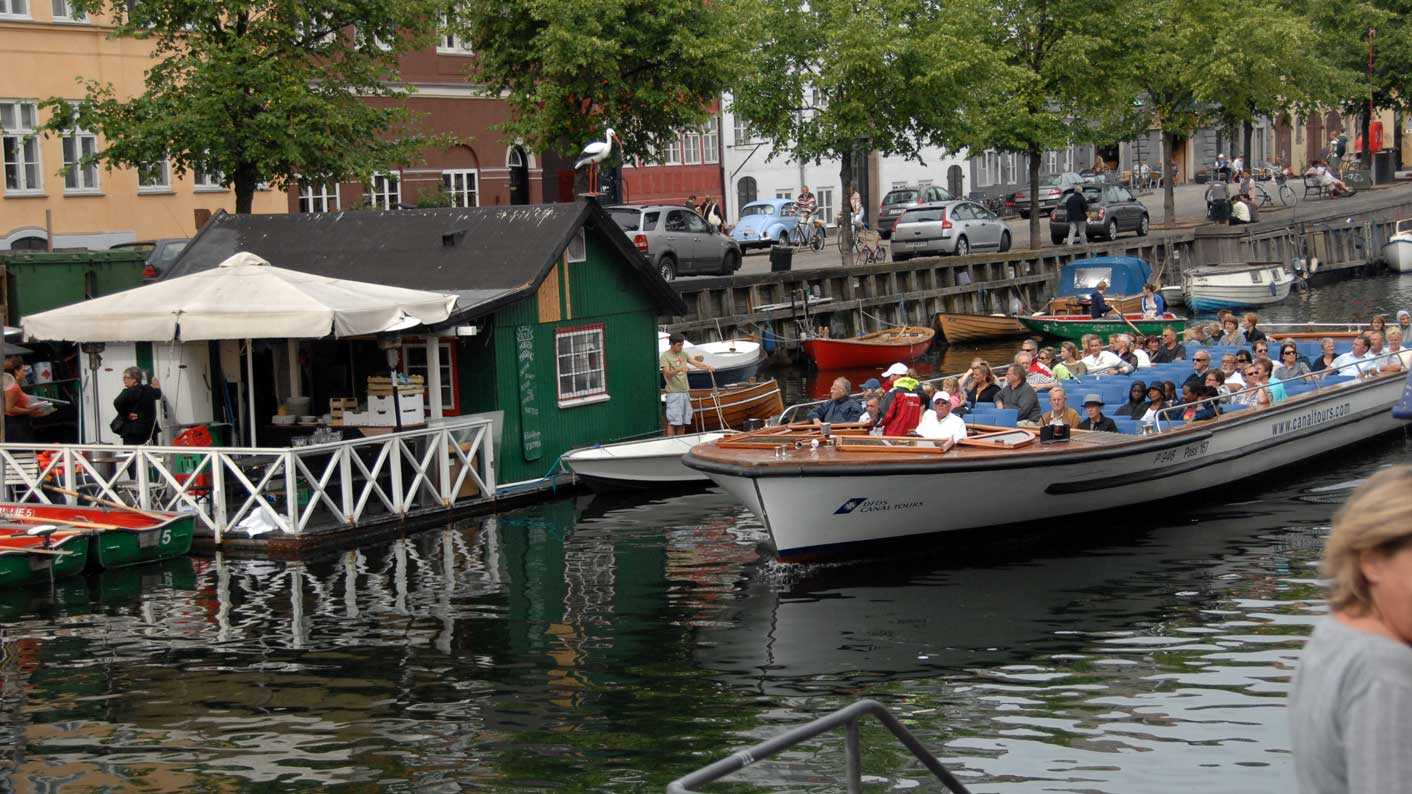 North on Amager we find Christiania, where we had to hide our cameras. 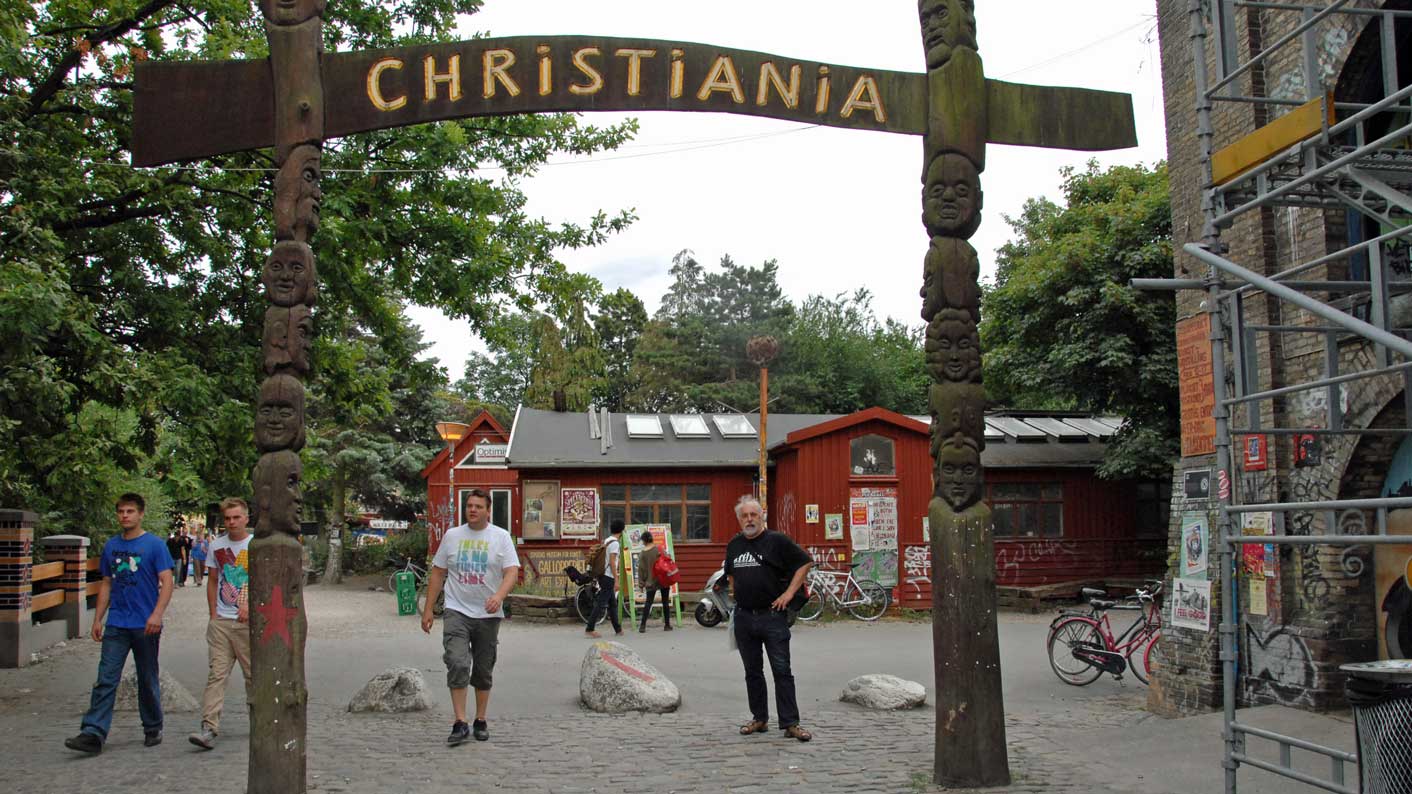 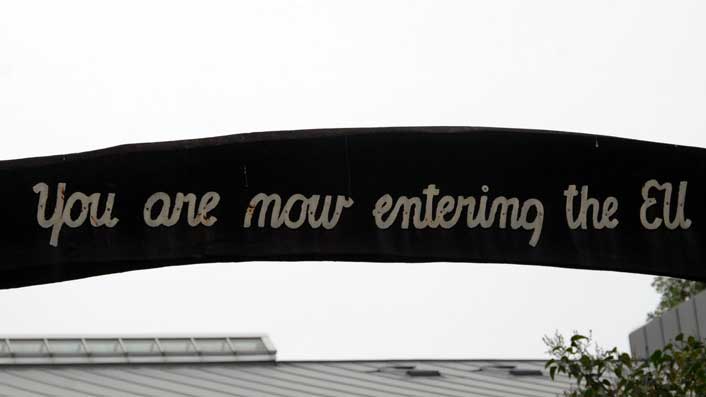 The other side of this sign "Christiania, often called Fristaden Christiania, an alternative community in Copenhagen, established on an abandoned, former military area in Christianshavn which was annexed by the so-called slum stormers in the autumn of 1971. The intention was to let Christiania become a place with room for everyone, including deviants. Many were users of narcotics, and among other things this led to confrontations with the police. The area gradually took shape as a miniature community, with, among other things, its own radio station. In 2004, the Folketing passed the Christiania Act, which is to promote a normalization of the area. Later that year, the residents received an offer from the state to buy the area for DKK 76.2 million, and accepted the offer at a joint meeting. Later, "public shares" were sold and a fund was set up to finance the purchase. The agreement means that the residents get property rights and use rights". In the middle of Amager, the tunnel and bridge go to Sweden. Thus, our 300 km long trip from west to east stops. More pictures from Copenhagen (in 2019) here. . |